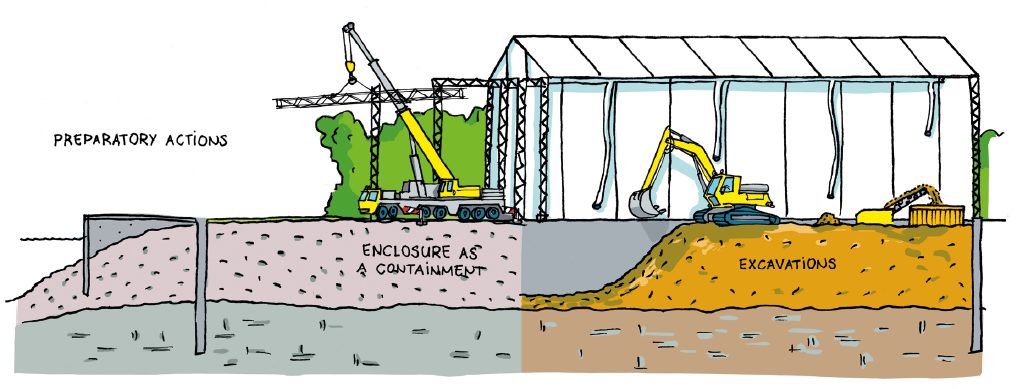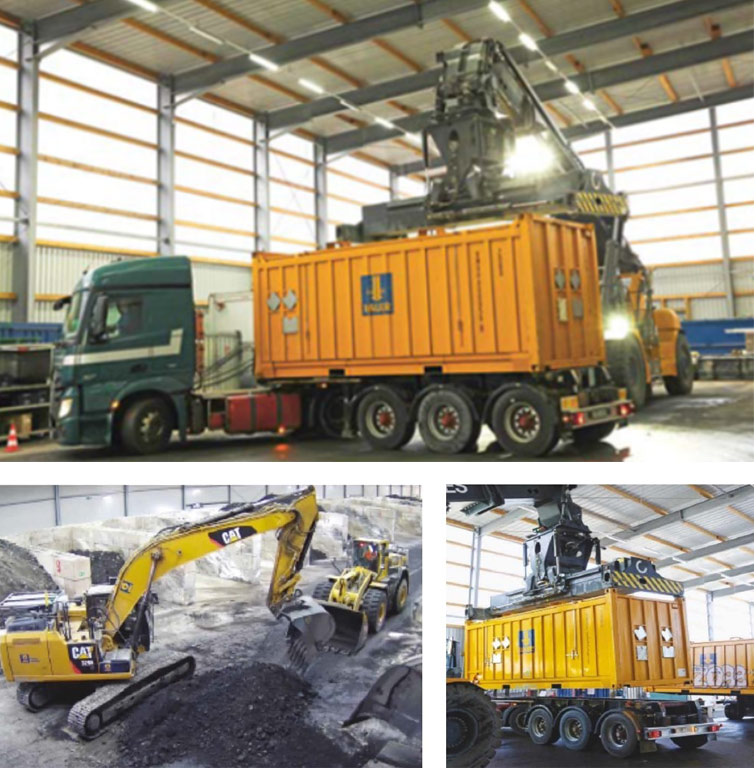Phase 3 - Remediation
This phase commenced in March 2023 following the granting and receipt of an Industrial Emissions (IE) Licence from the Environmental Protection Agency (EPA).
This phase commenced in March 2023 following the granting and receipt of an Industrial Emissions (IE) Licence from the Environmental Protection Agency (EPA).
This will involve bulk excavations to a depth of 3m below ground level (m bgl). Deeper excavations will be undertaken, where necessary to a max 5m bgl. Approximately 10,000 tonnes of contaminated soil will be excavated from AEC1 and sent in sealed containers to a licensed thermal treatment facility in mainland Europe.
This will involve bulk excavation to a depth of 8 - 9 m bgl. A secant piled wall (or similar) will be placed around the excavation perimeter to facilitate deep excavation.
Approximately 7,000 tonnes of contaminated soil will be excavated from AEC2 and sent in sealed containers to a licensed thermal treatment facility in mainland Europe.
This will involve bulk excavation on a section by section basis to a depth of 4 – 5m below the landfill liner.
Approximately 235,000 tonnes of material will be excavated from the landfill area, of which 60,000 is considered suitable for reuse as landscape material. The remaining 175,000 tonnes will be sent in sealed containers to a licensed thermal treatment facility in mainland Europe. Approximately 30,000 tonnes of clean, uncontaminated soil will be imported on-site for backfill, subject to validation sampling.
This aspect of the decommissioning project involves the demolition of all underground and over-ground buildings, facilities, roads and infrastructure within the site boundary with the exception of the ESB compound and the Fisherman's Cottage and the appropriate disposal and treatment of all associated waste.

